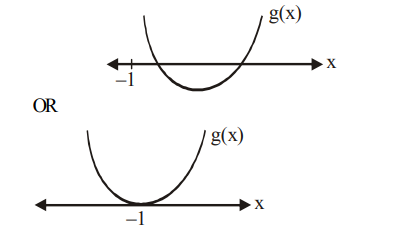Q.
Consider a rational function $f(x)=\frac{x^{2}-3 x-4}{x^{2}-3 x+4}$ and a quadratic function $g(x)=x^{2}-(b+1) x+b-1$, where $b$ is a parameter.
If both roots of the equation $g ( x )=0$ are greater than $-1$, then b lies in the interval.
Complex Numbers and Quadratic Equations
Solution:
